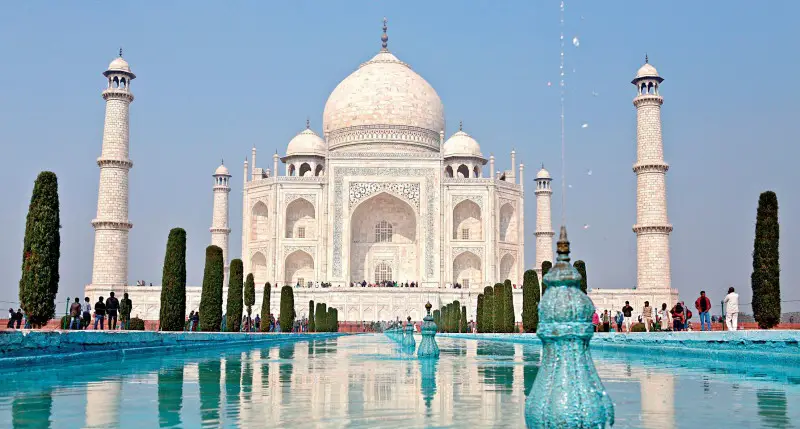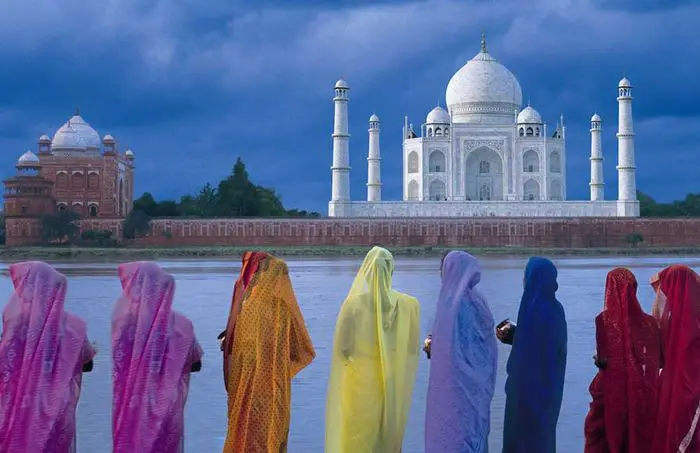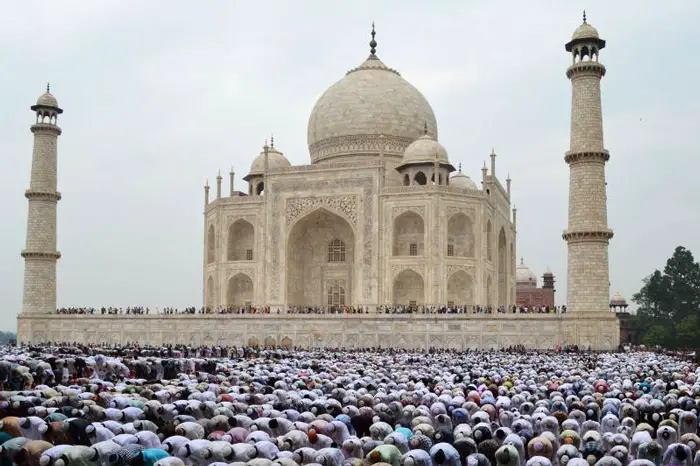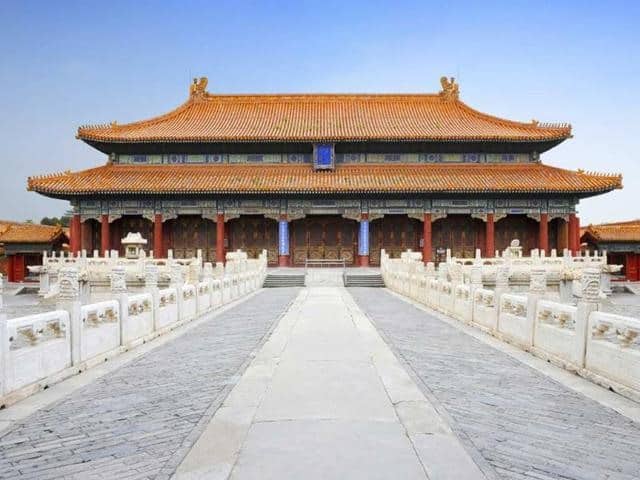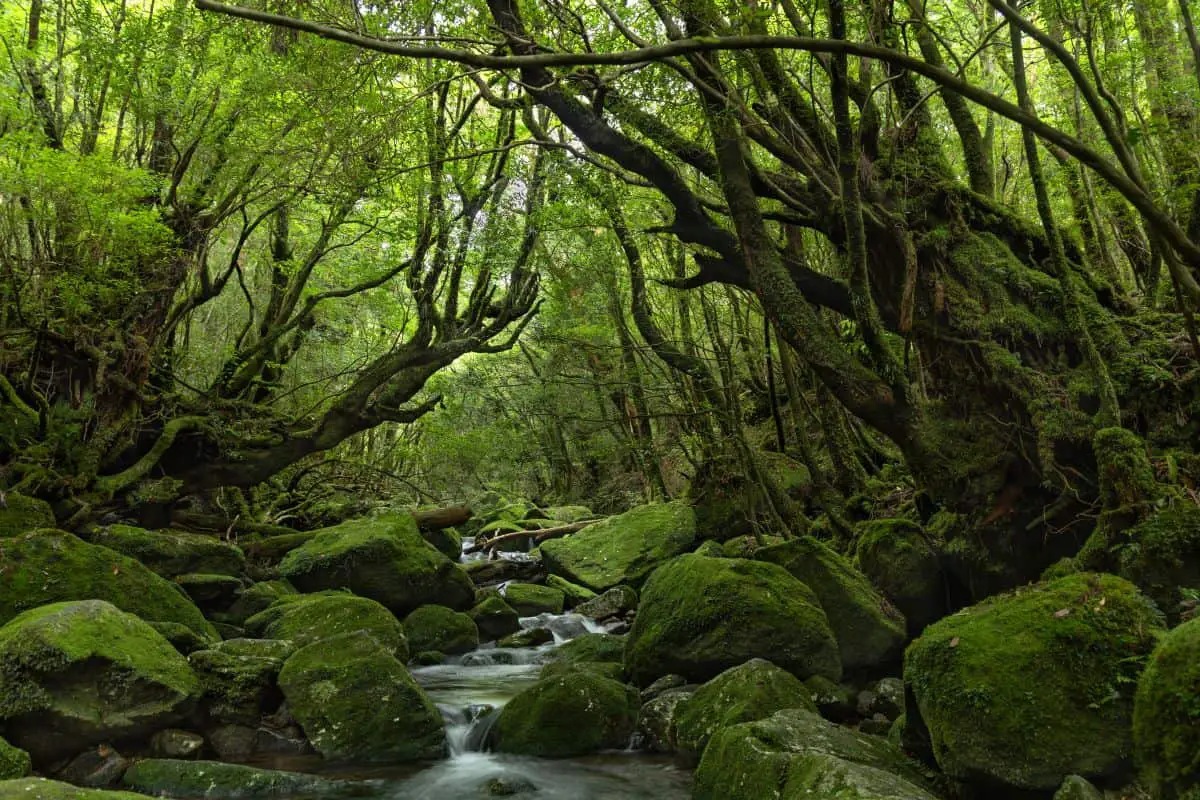Exploring Taj Mahal up close is a magnificent journey that brings you closer to this iconic symbol of love and architectural brilliance.
Thank you for reading this post, don't forget to subscribe!Taj Mahal up close Temple – World Cultural Heritage in India
Taj Mahal, a famous temple in India is considered a symbol of the eternal love between Emperor Shah Jahan and Queen Mumtaz Mahal. The Taj Mahal is located in the city of Agra, Uttar Pradesh state, northern India. The temple is built of white stone on a large, harmonious space, enhancing its pure and beautiful beauty. With typical Indo-Islamic architecture, the Taj Mahal shimmers in the blue sky like a precious gem, ecstatic anyone who has the opportunity to admire it.
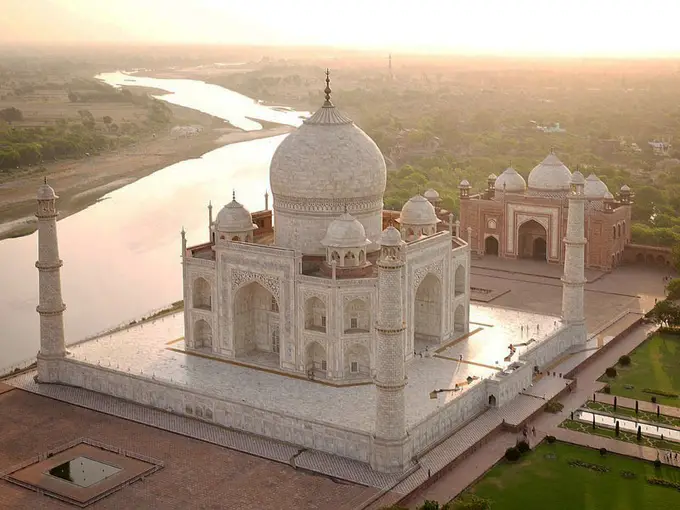
The history of the construction of the Taj Mahal is associated with the story of the eternal love of Emperor Shah Jahan (who ascended the throne in 1627) with his beloved wife, Queen Mumtaz Mahah. She unfortunately died at the age of 39 after giving birth to their 14th child (1631).
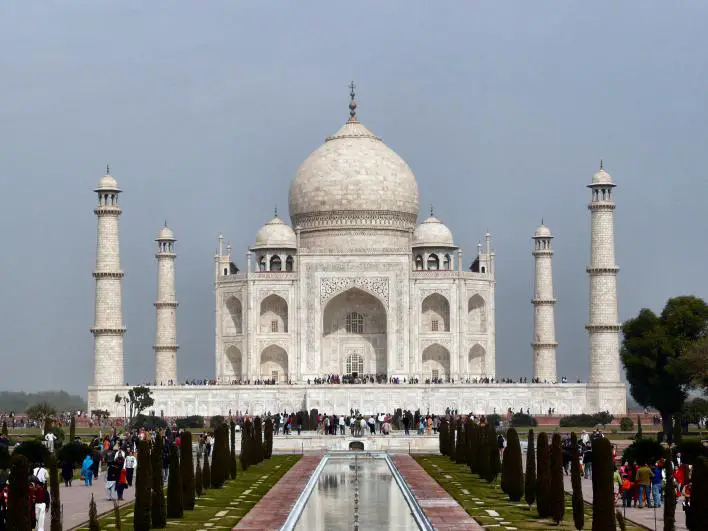
There are many stories about the death of the queen that have been passed down through the centuries, of which the most told story is: the death of Queen Mumtaz made the emperor extremely sad, after just one night his hair was cut off. become white. Before closing her eyes, Queen Mumtaz suggested asking the emperor to build her a mausoleum to commemorate their love. Soon after, because of his love for the queen, Emperor Shah Jahan personally oversaw the construction of the Taj Mahal for 16 years (1632 – 1648) to get a gift for his late wife.
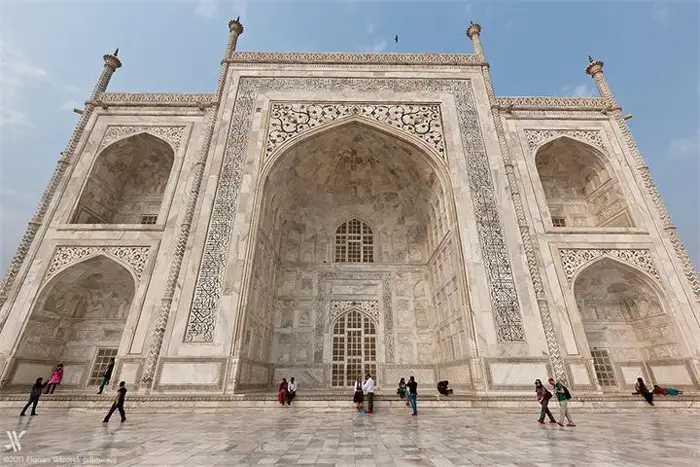
The Taj Mahal was built of white marble and many precious stones brought from many parts of the world. Therefore, the temple’s color changes magically during the day thanks to the discoloration of precious stones at different times depending on the color of the sunlight.
The Taj Mahal architectural complex has 5 categories: main gate, garden, mosque, resort and main mausoleum . The Taj Mahal was built on a plot of land 304m wide and 580m long. In the middle of the plot is a castle (the mausoleum of Emperor Shah Jahan and Queen Mumtaz Mahah) with an octagonal bottom 75m high with a round dome made of Completely made of white marble and sandstone. Surrounded by 4 small round domes. The four corners of the temple are four 40m high towers. According to Islamic concept, number 4 symbolizes divinity and immortality. The height of the temple is about 80m.
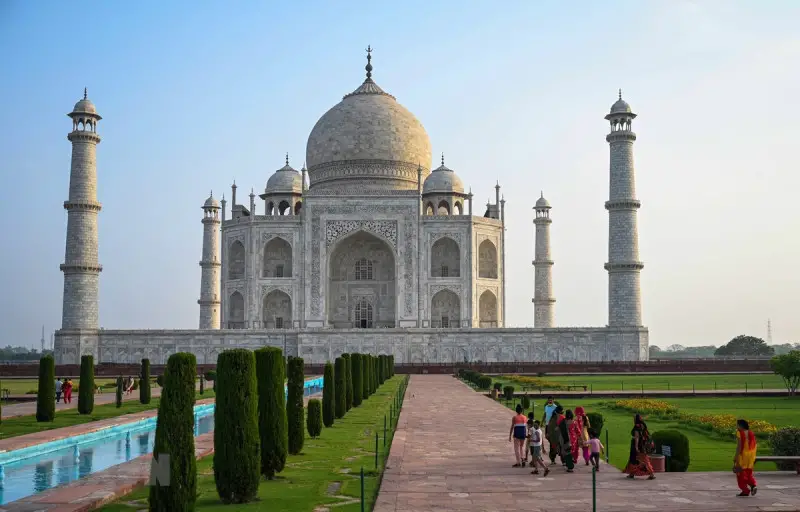
Surrounding the castle are walls with many windows and arched doors, carved extremely delicately with different types of precious stones. On the large room on the second floor are the two tombs of Emperor Shah Jahan and Queen Mumtaz Mahal, inlaid with 12 colorful gemstones on a white marble background decorated with many elegant motifs.
The auxiliary works around the Taj Mahal and the garden were completed about 5 years later, creating a harmonious architectural complex, enhancing the magnificent beauty of the main building.

The Taj Mahal was designed by Iranian architect Ustad Tsa. According to stories, he was the best architect of that period and was invited by Emperor Shah Jahan to come and design it, supervised the construction of this wonder.
To complete the Taj Mahal, it is estimated that 20,000 Indian workers and craftsmen will be needed. To transport raw materials, mainly stone, the king bought more than 1,000 elephants to carry the materials to the temple. Many precious materials have been purchased and brought from many distant lands, which makes a difference for the temple.
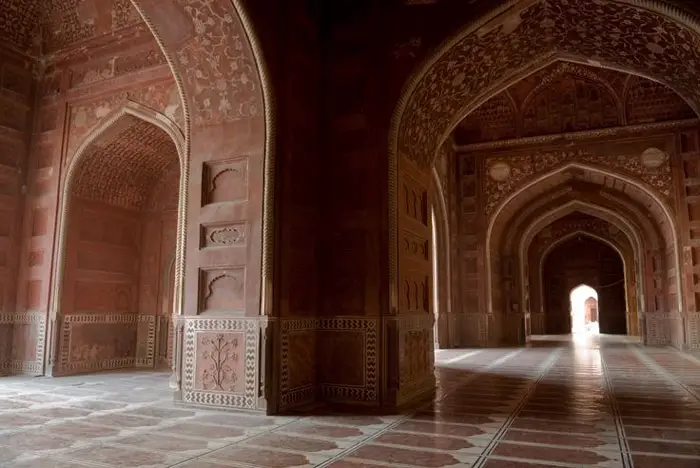

If Agra is a beautiful flower garden of Indian architectural art during the Mogol period, then the Taj Mahal is the pride of this country. Truly, the Taj Mahal was created with the flesh and blood and wisdom of Indians and became one of the masterpieces of human architectural art.
Standing up close to the Taj Mahal, you’ll recognize the beauty of its white marble façade, adorned with delicate inlay work and inscriptions from the Quran. The play of light and shadow on its surface creates a mesmerizing visual symphony that captivates the soul.
Moreover, exploring Taj Mahal up close allows you to appreciate the meticulous garden layout and the strategic alignment of the entire complex. The reflection pools enhance the ethereal beauty, creating a picturesque scene that adds to the overall charm of this UNESCO World Heritage Site.
Because of its magnificent beauty and eternal love story, the Taj Mahal is widely known around the world. This temple is well worthy of the name “The Pearl of Indian Temples” or “The Fairy Dream Appears in White Stone” and is one of India’s most famous cultural heritage sites.
